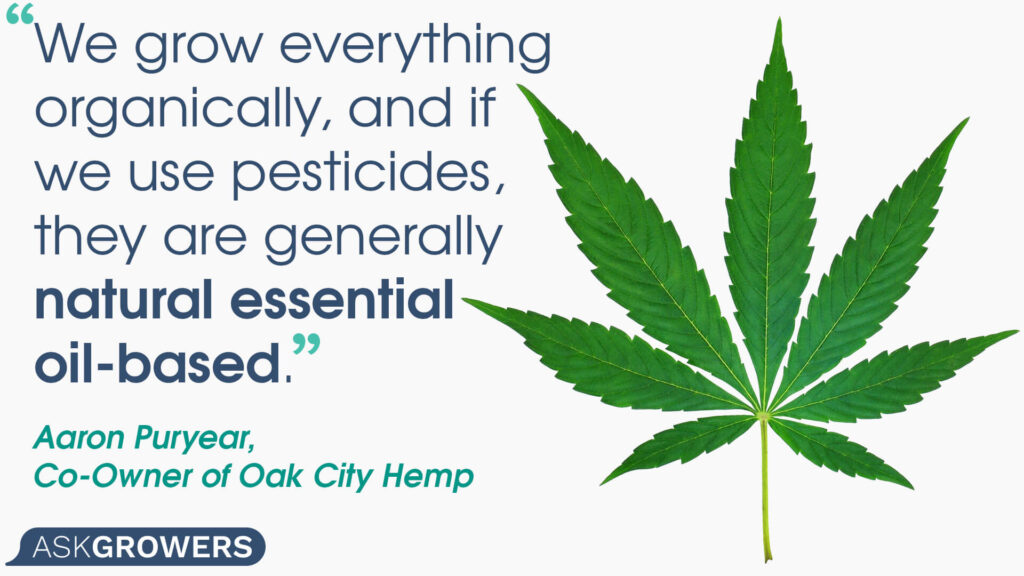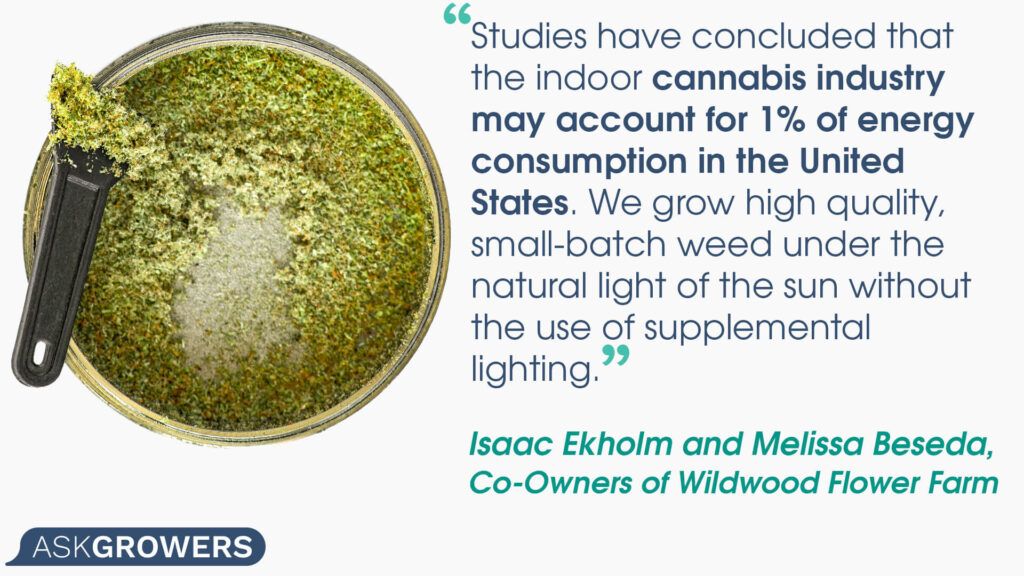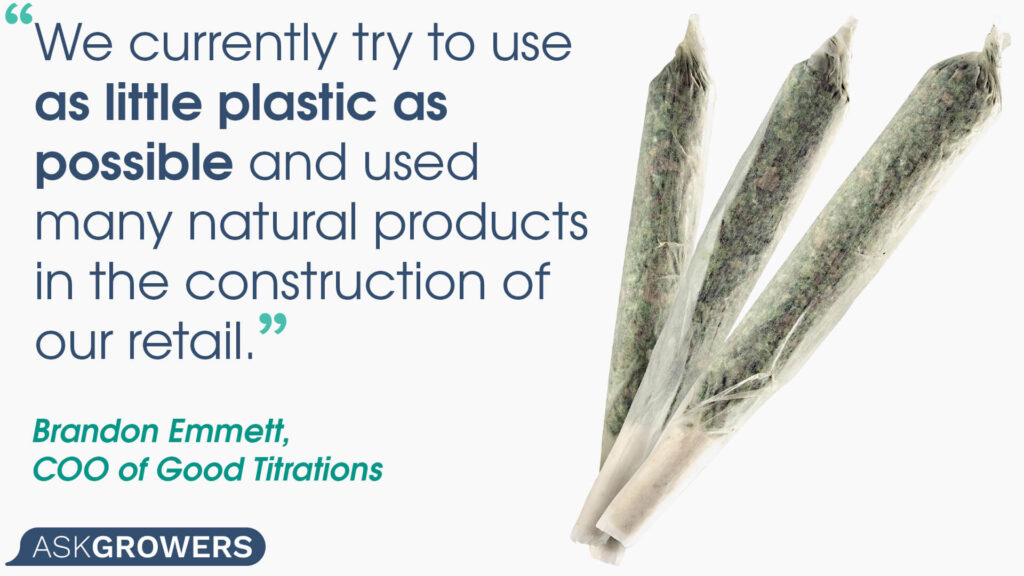This article by Lana Braslavskaia was originally published on AskGrowers and appears here with permission.
Sustainability has become an increasingly important consideration both on the consumer end and how manufacturers run their businesses. Even at the height of the pandemic when jobs were scarce and money tight, sustainability concerns rose across the country, with 78% of buyers saying they factor sustainability into their buying decisions.
The cannabis industry, which, almost by virtue of its own existence, is ever sympathetic with progressive causes has taken special pains to (pun intended) stay green.
All the same, the cannabis industry is associated with lots of waste, both in its high use of energy and in the enormous amount of wasteful materials that often go into its packaging. Just what does sustainability look like in this increasingly divided industry? Below we take a very direct look at what a few brands are doing to keep their product sustainable. Read on to learn about sustainable cannabis industry trends.
Pesticides
In any agricultural pursuit, pesticides are always a major contributor to environmental harm. Not only can pesticides be very harmful to the air quality, but they also cause havoc to local ecosystems, killing “good” and “bad” animals without discrimination.
A study from the early 2000s revealed that traces of pesticides could be detected in up to 90% of all rivers and streams—with trace elements present even in the fish that we eat. For large-scale farming, pesticides are often viewed as a necessary evil, but some cannabis manufacturers are finding ways around the need to introduce toxic chemicals into the environment.
Aaron Puryear at Oak City Hemp says that their brand makes a special effort to keep things chemical-free. “We grow everything organically, and if we use pesticides, they are generally natural essential oil-based.”

Other brands have made a point of taking a more holistic approach to pest management to facilitate sustainable cannabis production. At Pure Beauty, Imelda Walavalkar says they put extra effort into sustainability. “Our cultivation has no runoff; even “safe” fertilizers and nutrients will contaminate surrounding water supplies making life uninhabitable for indigenous species. We also use bugs like rolly pollies, earthworms, and nematodes along with friendly bacteria, fungi, and protozoa to create a “soil food web,” which helps naturally prevent disease and plant-eating predators by working with the plant to provide nutrients and protection. And then we donate all of our soil to public parks.”
As cannabis grows in legality, the use of pesticides is likely to proliferate to accommodate the higher demand. While this potential does hold a risk both for public health and safety, and the state of the environment at large, concerned consumers can do their part by supporting brands that prioritize sustainability.
Production
Cannabis production has the potential to be very harmful to the environment. When grow operations take place indoors, they use a tremendous amount of electricity that otherwise wouldn’t have been consumed in an outdoor setting.
While many brands still prefer indoor growing due to the amount of control it gives them over production, some are taking a different approach.
For example, the people at Wildwood Flower Farm have made a special commitment to avoiding the waste produced by indoor grow operations. “Studies have concluded that the indoor cannabis industry may account for 1% of energy consumption in the United States. We grow high quality, small-batch weed under the natural light of the sun without the use of supplemental lighting.”

Of course, brands that do grow indoors are not without recourse for where sustainability is concerned. While eco-friendly practices for indoor growth tend to be more expensive, many have found the increased upfront investment to be well worth it.
Newt Brothers Artisinal Cannabis has made a range of special efforts to maximize its sustainability. “Environmentally, we were one of Colorado’s and the nation’s first facilities to utilize LED lighting exclusively. While LED’s are initially more expensive, they cut our energy consumption in half and reduce our cooling requirements by up to sixty percent. We have automated watering and nutrient feeding systems that nurture our plants. And we recycle condensate from our cooling units for reuse. We are Colorado proud to be a leader in cannabis industry sustainability.”
Waste
Not all environmental pain points happen during cultivation. Like any mass-produced product, cannabis now faces the risk of waste. Some of this waste does happen in the fields. Everything from trimmings to other production materials often winds up in landfills.
Not only are the materials bad for the environment, but they have also proved harmful to the community in select circumstances. For example, a Boston-based teenager became sick after consuming a cannabis byproduct he found in a dumpster outside of a manufacturer’s place of business.
Packaging materials are another huge source of waste. Imelda from Pure Beauty says this fact is always on their mind, guiding many of the decisions they make in their sustainable cannabis packaging process. “We try not to use too much stuff. We try not to use plastic. Most of our packaging is made from paper (and as little of it as possible) and is recyclable or compostable. We also spent a lot of time creating a child-resistant mylar bag that is made from plant starch. Traditional plastic mylar pouches are basically impossible to recycle and will not decompose.”

Brandon Emmett at Good Titrations has taken an approach similar to Imelda’s when it comes to sustainability in cannabis packaging. “We currently try to use as little plastic as possible and used many natural products in the construction of our retail.”
Conclusion
Young as it is, the cannabis industry is still discovering how it can excel at sustainability. The confluence of many factors will ultimately account for its role in preserving environmental health. The producers highlighted above show that it is possible to find success in the world of cannabis while still thinking about mother earth.
All the same, the potential for the reverse is also very prevalent. A recent study has indicated that indoor cannabis farms account of all Colorado’s emissions.
True sustainability, though not easy, is possible. Ultimately, the eco-friendliness of the industry will hinge on the decisions of its producers. For now, cannabis enthusiasts can be thankful that there are many brands out there that have made a point of keeping their practices green.
© 2025 Benzinga.com. Benzinga does not provide investment advice. All rights reserved.
Trade confidently with insights and alerts from analyst ratings, free reports and breaking news that affects the stocks you care about.
Cannabis is evolving – don’t get left behind!
Curious about what’s next for the industry and how to leverage California’s unique market?
Join top executives, policymakers, and investors at the Benzinga Cannabis Market Spotlight in Anaheim, CA, at the House of Blues on November 12. Dive deep into the latest strategies, investment trends, and brand insights that are shaping the future of cannabis!
Get your tickets now to secure your spot and avoid last-minute price hikes.